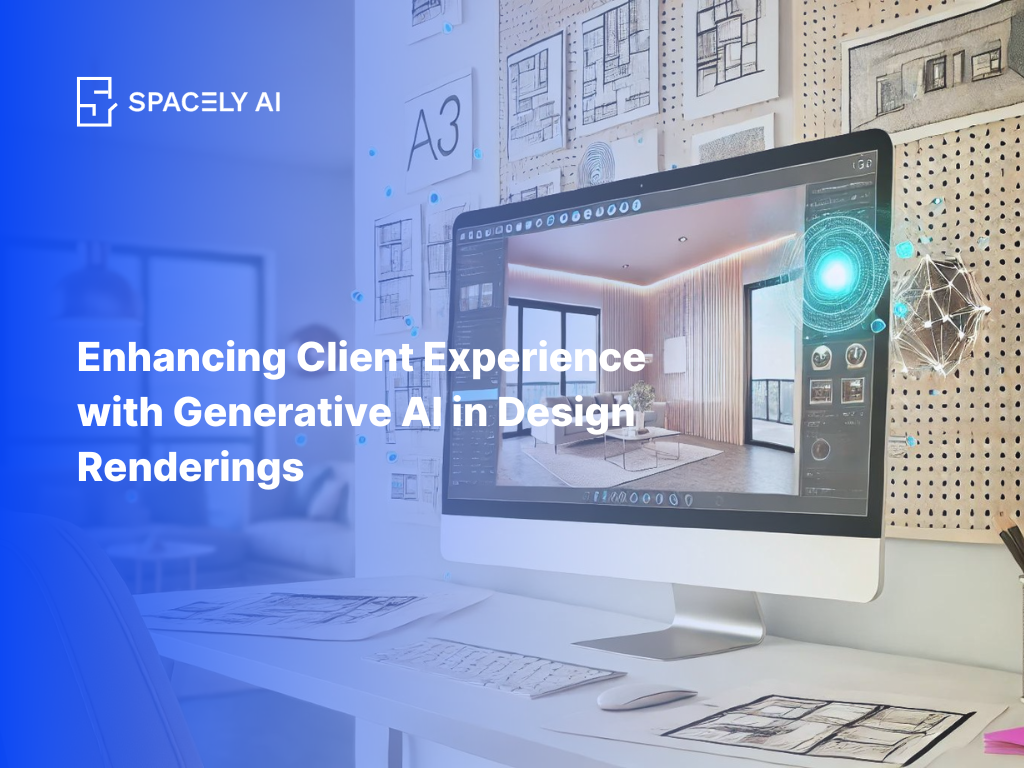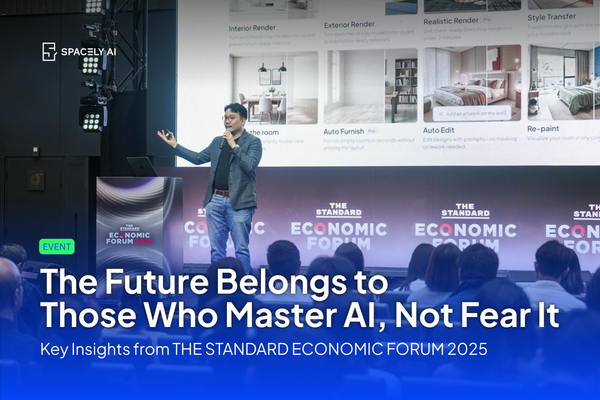Enhancing Client Experience with Generative AI in Design Renderings

SEO Meta Description:
Explore how generative AI in design renderings is revolutionizing client communication, delivering personalized designs, and speeding up project approvals, transforming the future of client-designer collaboration.
In the world of interior design, client satisfaction is paramount. The process of bringing a client's vision to life has traditionally been time-consuming and filled with iterations. However, with the advent of generative AI in design renderings, the landscape is shifting dramatically. This technology is not just a tool for designers; it's a game-changer for client experience. From improving communication to delivering highly customized designs, generative AI is making the design process smoother, faster, and more client-focused.
How AI-Generated Renderings Improve Client Communication
Clear communication is the cornerstone of any successful design project. However, translating a client's abstract ideas into tangible designs can be challenging. This is where AI-generated renderings come into play. AI can quickly generate realistic and detailed visualizations based on a client’s preferences and inputs, bridging the gap between what the client envisions and what the designer creates.
- Visual Clarity: AI-generated renderings provide a visual representation that is often more detailed and accurate than traditional sketches or basic 3D models. This clarity helps clients better understand the proposed design, leading to more informed decisions and fewer misunderstandings.
- Real-time Adjustments: During meetings or consultations, AI tools can adjust renderings on the fly, allowing clients to see changes in real time. Whether it's changing a color scheme or rearranging furniture, clients can instantly see the impact of their choices, making communication more dynamic and interactive.
- Language of Design: Not all clients are familiar with design terminology, which can make traditional discussions challenging. AI renderings, however, speak a universal language—visuals. By showing rather than telling, designers can more effectively communicate concepts and ideas.
The Role of AI in Delivering More Accurate and Customized Designs
Generative AI excels at personalization. By analyzing data from a client’s preferences, lifestyle, and even subtle cues gathered during consultations, AI can generate design renderings that are highly tailored to individual tastes.
- Precision in Design: AI algorithms can incorporate vast amounts of data, including spatial measurements, lighting conditions, and material properties, to produce renderings that are not only visually appealing but also accurate down to the smallest detail. This precision ensures that what clients see in a rendering is as close to the final outcome as possible.
- Customization at Scale: Traditionally, creating a highly customized design for each client could be a time-consuming process. With generative AI, designers can quickly produce multiple variations of a design, each customized to different aspects of the client’s needs. This allows for a level of personalization that was previously impractical on tight timelines.
- Data-Driven Design Choices: AI can analyze previous projects, industry trends, and client feedback to inform design decisions. This data-driven approach helps in creating designs that are not only aesthetically pleasing but also functionally superior.
Case Studies: How AI Renderings Led to Quicker Project Approvals
The integration of AI in design renderings has already led to remarkable improvements in project approval times across the industry. Here are a few notable examples:
- Residential Design Project: A design firm used AI-generated renderings to present multiple layout options to a homeowner. The AI was able to quickly adjust designs based on the client’s feedback during the meeting, leading to a final design approval in just one week—a process that traditionally took several weeks.
- Corporate Office Space: A company redesigning its office used AI renderings to visualize different configurations of workspaces. The AI’s ability to provide real-time updates and immediate renderings of new ideas allowed the client to make decisions faster, cutting the approval process by half.
- Retail Space: A retail chain used generative AI to simulate store layouts and customer flow. The highly detailed renderings helped the client visualize the impact of different design elements on customer behavior, leading to swift approval of the design plans.
These case studies highlight the tangible benefits of AI in expediting the approval process, saving time, and reducing costs for both clients and designers.
Feedback Loops: How AI Can Adapt to Client Preferences in Real-Time
One of the most powerful aspects of generative AI is its ability to learn and adapt. Through continuous feedback loops, AI can refine its output to better align with client preferences.
- Continuous Learning: AI systems can analyze client reactions to different designs and adjust future renderings accordingly. For example, if a client consistently prefers certain color palettes or layouts, the AI will prioritize these elements in subsequent designs.
- Dynamic Adjustments: During the design process, clients often change their minds or refine their preferences. AI can quickly incorporate these changes, updating renderings in real-time to reflect the latest client inputs. This adaptability ensures that the design evolves with the client's vision.
- Personalized Experience: By understanding and predicting client preferences, AI can preemptively suggest design elements that align with the client's taste. This proactive approach not only saves time but also enhances the client’s experience by making them feel understood and valued.
The Future of Client-Designer Collaboration Through AI
As generative AI continues to evolve, the future of client-designer collaboration looks increasingly promising. AI is expected to play an even more integral role in the design process, offering new ways for clients and designers to interact and collaborate.
- Virtual Reality (VR) Integration: Imagine a future where clients can walk through their AI-generated designs in a virtual environment. This immersive experience would allow for an unprecedented level of interaction with the design before any physical work begins.
- AI-Driven Design Proposals: In the near future, AI could autonomously generate design proposals based on a brief, complete with detailed renderings and data-driven justifications. Designers could then fine-tune these proposals, significantly reducing the time spent on initial concepts.
- Collaborative Platforms: AI could power online platforms where clients and designers work together in real time, with the AI facilitating communication, generating ideas, and making adjustments on the fly. This would create a more fluid and responsive design process, improving client satisfaction and project outcomes.
Generative AI is transforming the interior design industry by enhancing client communication, delivering highly accurate and customized designs, and expediting project approvals. Its ability to adapt to client preferences in real-time creates a more personalized and satisfying experience for clients. As technology continues to advance, the role of AI in client-designer collaboration will only grow, promising a future where design is more innovative, efficient, and client-focused than ever before.
If you enjoyed this content and want more interior design ideas, don't forget to subscribe to our blog. Stay tuned with Spacely AI's Design Diaries for the latest insights and innovations in design. Together, let's explore, innovate, and redefine the boundaries of design.
For more information and media inquiries, please contact
Website: spacely.ai
Facebook: facebook.com/spacelyai
Instagram: instagram.com/spacely.ai
X: x.com/spacelyai
Email: hello@spacely.ai



